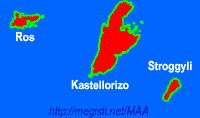Mirrorkal Escher
Share
(Click to Enlarge) - M.C. Escher: Sky and Water I 1938
World-renowned puzzle inventor Ivan Moscovich is the designer of this fascinating Mirrorkal Escher. The design and concept is similar to the Mirrorkal - You and Mona Lisa, also invented by Ivan, although the mechanics and the way you manipulate the puzzle is totally different. Curiously enough, Ivan actually met M.C. Escher in person, back in 1964.
The main difference between the two Mirrorkal puzzles is that the "You and Mona Lisa" is basically a slide puzzle and the blocks are confined to frame. In the Escher puzzle, however, you can hold and manipulate each block how you want, sort of... Although, don't think for a minute that this particularity makes the puzzle easier. On the contrary, as I found the Mirrorkal Escher to be much more challenging, because ultimately, it has many more possible combinations - Wrong combinations, if you will.
If you've never played with a Mirrorkal puzzle before, I'll explain the basics. You have nine blocks, each with four pictures covering all faces except for two, which are left blank or transparent. These two faces that are adjacent to each other, have a strategically placed mirror parallel to their common edge. When correctly placed in the frame, the mirrors will reflect each of the nine picture fragments and compose a whole image. Featured in the puzzle are five of M. C. Escher's most famous images.
(Click to Enlarge) - Blocks and Frame
Each block is roughly 3cm in length (1.18"), so including the sides of the frame, the entire puzzle measures about 13cm (5.12") in length. Since all nine cubes don't have the necessary picture fragments due to the use of the mirrors, you can find the remaining ones inside the walls of the frame. These wall fragments are very useful to know the picture orientation and actually help you to plan where to place each block. A nice design feature found in the frame is that there are nine holes in the actual place where each block goes, allowing you to easily remove any incorrectly placed one.
Solving any of the five images can be a little challenging, particularly your first one. After you get the hang of it, the last ones can be solved in about 5 minutes. The logic you have to follow is to know exactly how each picture fragment will look after being reflected. If you look closely to a fragment on a block and its counterpart on the puzzle's leaflet, you'll see that the one in the block is actually mirrored. When you use the mirror to reflect the image, it'll show it with the correct orientation.
(Click to Enlarge) - Left: Drawing Hands (1948); Right: Hand with Reflecting Sphere (1935)
The first thing you have to do in order to solve a specific image is to separate the blocks that have your picture fragments from the ones who don't. Those few blocks that don't have your fragments will only serve for reflection, so use them wisely. Next, find the correct orientation for the frame, seen from inside the frame's walls and start placing the most obvious ones first. As you place more blocks, it'll become clearer where each one goes.
The Mirrorkal Escher is widely available in the market and you can find it pretty much at every large online puzzle shop. The Recent Toys website, which is the distributor, only does wholesale.
(Click to Enlarge) - Left: Print Gallery (1956); Right: Reptiles (1943)
Closing Comments:
I really enjoyed solving all five puzzles. Ivan Moscovich did a wonderful job at transforming Escher's images into a magnificent puzzle. The use of mirrors is a fantastic concept and I can see anyone being captivated by its original design and the mesmerizing images.
Links:






































3 comments:
An interesting concept puzzle, another one for the 'to buy' list.
Indeed, it's a great puzzle. I already knew this mirror concept from the Mona Lisa puzzle, but I like this one even better. Seems simple enough, although it's a little more complex than that.
Cheers ;-)
It took me a few days but now I can fix all 5 of them in 3 minutes each.
Post a Comment